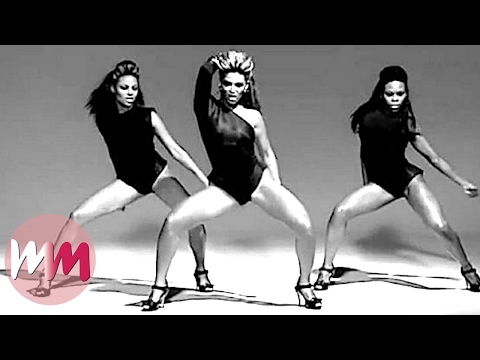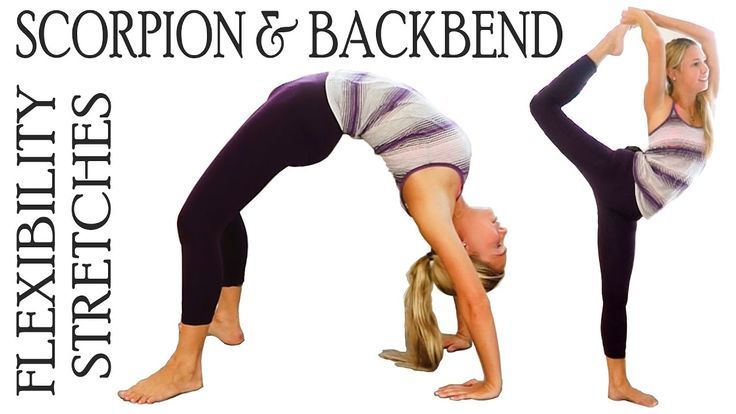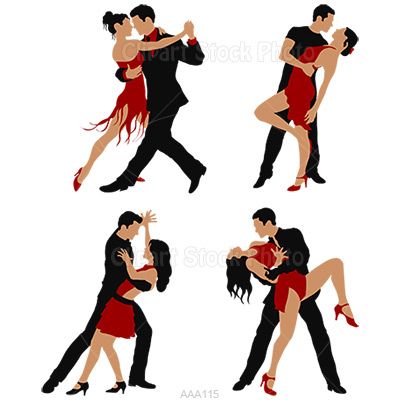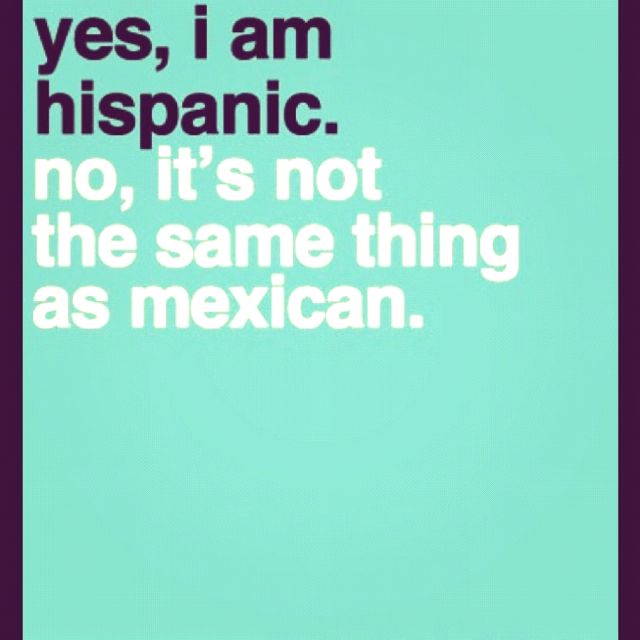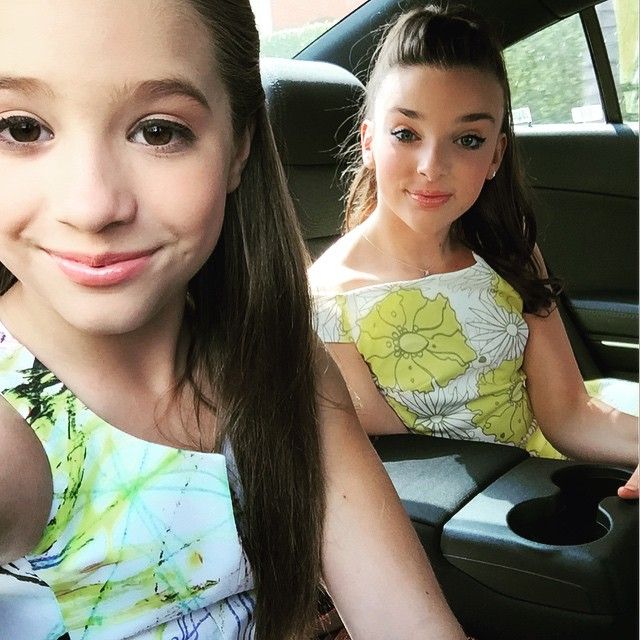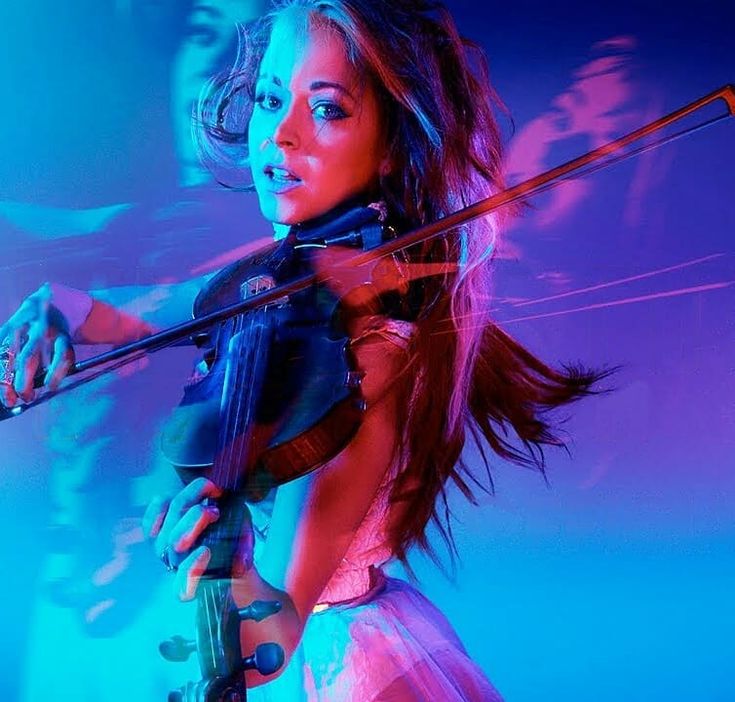How to coreograph a dance
10 Tips From the Pros
Creating movement from scratch to encompass the feeling, rhythm, and theme of a song takes a little imagination and some work, whether you're a beginner or getting ready for a big performance. When you're including the movements and dance phrases for multiple performers, too, choreographing a dance can get quite complicated. That's why we're giving you some top pro tips on how to choreograph a dance when you're feeling stuck, including methods you can use to step outside the box and spice up your routine.
1. Study the Music
If you know what music you want to choreograph your dance to, start studying. Go beyond creating movements based on the rhythm and beat of the song, and study the lyrics, the emotion, and the meaning behind the song. You can find inspiration from the feelings you get when you read the words, and embrace the emotion the artist puts into the song.
Poppin' C, a Swiss popping dancer, says, "The music is everything for me, because the way my body adapts and moves, is because of the way I feel the music. " By knowing every part of your music inside and out, you can design dance moves that really work with the beat and lyrics.
B-boy Junior holds a breaking workshop at Red Bull BC One Camp in Mumbai
© Ali Bharmal / Red Bull Content Pool
2. Watch the Pros
Take some time to watch dance-heavy musicals, like "Chicago" and "Anything Goes," competitive series like "World of Dance," and even street performers, like Logistx, to grab some inspiration for your moves. Observe the styles, transitions, and combinations of movements and note how pro dancers create a physical connection to the music. This can help motivate you to create dances that get the audience to connect with your physical interpretations of the music.
3. Plan for Audience and Venue
Think about who your performance or event is for. Consider the venue you're performing at, too, because your dance environment can help you find ways to creatively express emotion. Lighting, sound, and the overall ambiance of your venue can help you design dances that incorporate mood and emotion to connect with the audience during your performance.
4. Think About Dance Style
Choreograph with steps and dance moves that reflect a specific style. You might try incorporating hip hop steps into a classical dance to mix it up and create your own unique dance style, for example. If you're just starting out with dance choreography, try focusing on learning how to balance a specific style of dance with your unique interpretation of the music you're dancing to.
Kid David poses for a portrait at Red Bull Dance Your Style USA Finals
© Carlo Cruz/Red Bull Content Pool
5. Focus on the Basic Elements
Focus on one (or several) of the most basic elements of dance: shape, form, space, time, and energy. For form, you can focus on designing phrases and steps based on a specific form from nature, like an animal or landform. Use your stage space to showcase explosive energy and give certain aspects of your performance a punch of emotion that keeps your audience engaged.
6. Don't Start at the Beginning
If you're stuck trying to figure out how to start your dance, plan it out from the middle or from the end.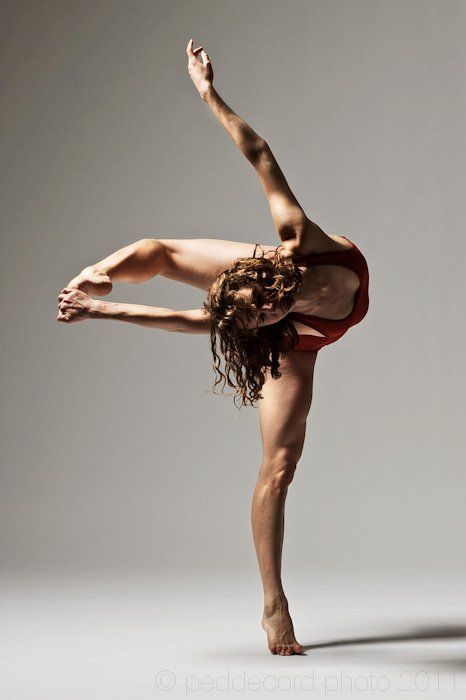 Tell a story through your dance choreography and plan out the climatic elements before the small steps to help you flesh out where you want to go with your ideas. Once you've outlined the basic structure of your choreography, piece it together into an entire work.
Tell a story through your dance choreography and plan out the climatic elements before the small steps to help you flesh out where you want to go with your ideas. Once you've outlined the basic structure of your choreography, piece it together into an entire work.
7. Try Choreographing Without Music
Dance in silence. It might seem like a crazy idea since you're choreographing the dance to a specific song. However, just letting your body move and flow with different tunes you imagine can help you step outside your comfort zone and incorporate challenging moves and dance steps that you might not have thought to pair with a song or score. When you discover something you like, pair it with other steps you've already developed and start fitting your moves to the music.
Poppin C shows off his moves during a photoshoot in Lausanne
© Torvioll Jashari / Red Bull Content Pool
8. Embrace Post-Modernism
Study early modern dance forms and styles that can get your imagination flowing.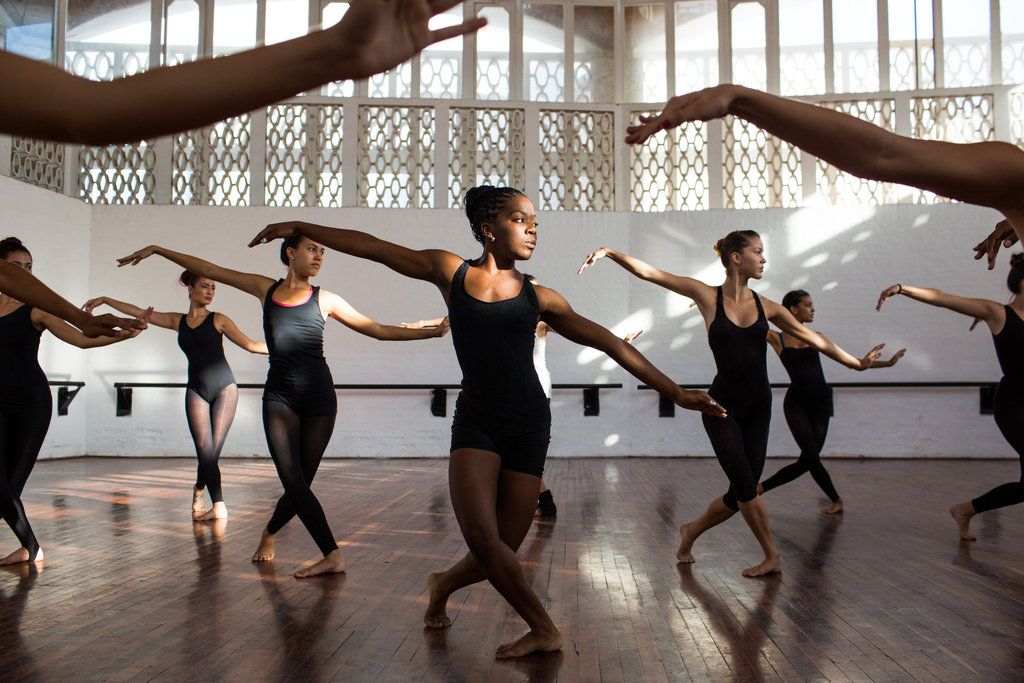 Dancers from the mid-century modern era through the 1950s and '60s (such as Anna Halprin, one of post-modern dance's pioneers) would incorporate a whole world of nontraditional moves in their choreography. Slow walking, vocals, and even common gestures can make imaginative additions to your overall work.
Dancers from the mid-century modern era through the 1950s and '60s (such as Anna Halprin, one of post-modern dance's pioneers) would incorporate a whole world of nontraditional moves in their choreography. Slow walking, vocals, and even common gestures can make imaginative additions to your overall work.
9. Incorporate the Classics
Use classical ballet, traditional ballroom steps, or other classic dance moves to mix up your style. It can be a startling transition for an audience to see a classical ballet step snapped in between freestyle phrases. Combining classical techniques with your dance design can add interest and suspense to your performances.
10. Use Other Art Forms as Inspiration
Don't just focus on music and dance. Look at all kinds of art forms, from two-dimensional paintings to live art performances. Take note of the different emotions and use of space, shapes, and forms that different artworks incorporate, and think about your interpretations and how you can convey that in movement. Use this as fuel for your inspiration when choreographing short phrases. Keep up to date on new forms of art to get inspired and avoid the dreaded writer's block (for dancers).
Use this as fuel for your inspiration when choreographing short phrases. Keep up to date on new forms of art to get inspired and avoid the dreaded writer's block (for dancers).
More Pro Tips to Choreograph a Dance
Arlene Phillips CBE, a British choreographer and theater director, got her start pro dancing and choreographing in the 1970s. She's been the choreographer for a variety of performances over the years, including live theater. Her advice for aspiring dancers includes some helpful choreographing tips:
Tell the music's story through your movements
Keep practicing with imaginative steps
Be determined to learn from your mistakes
Challenge yourself with unique rhythms, styles, and techniques
Plan out your most impactful elements then work in additional steps around those
Keep practicing your choreographing techniques
Don't be afraid to learn something new
One of the most important things to keep in mind when choreographing a dance, though, is to embrace diversity.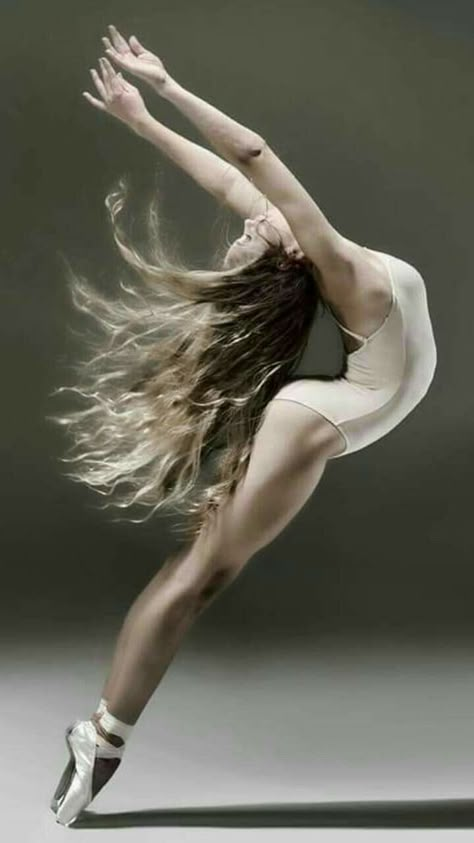 Don't be afraid to do something different or outside the norm. Try incorporating new styles or steps to make your dance fresh, and study all types of art to get excited about your work. The more you challenge yourself to think outside the box, the more creative and unique you can be with your choreography.
Don't be afraid to do something different or outside the norm. Try incorporating new styles or steps to make your dance fresh, and study all types of art to get excited about your work. The more you challenge yourself to think outside the box, the more creative and unique you can be with your choreography.
How To Choreograph A Dance Routine In 6 Simple Steps
Are you wondering how to choreograph a dance routine? Or if you even can???
The answer is YES, YOU CAN! And you totally should.
Choreographing isn't just for professional dancers with tons of clout. It's a skill that anyone can learn with a little practice and inspiration. Not sure how to start? Just follow this handy 6-step guide and start creating!
Finding the right song could be the easiest or hardest part of choreographing.
Sometimes, you hear a song for the first time and you know, you just KNOW, that it's the one.
Other times, you browse through your entire iTunes library, SoundCloud dashboard, Spotify playlists, and still don't feel anything.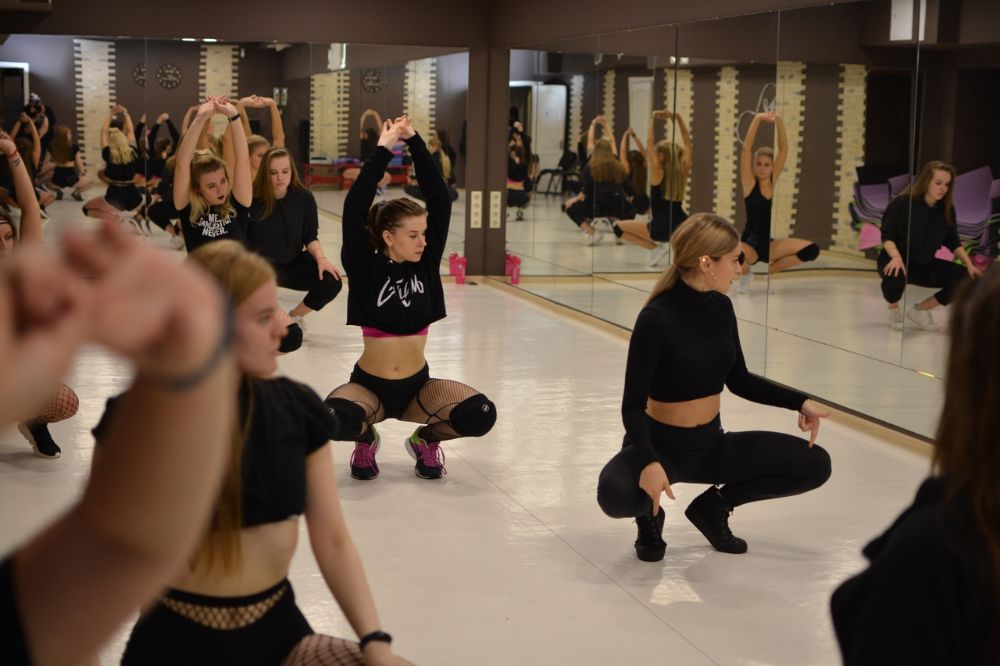
But once you have a song and pick out the section you want to choreograph to, listen to it...A LOT. And don’t just listen – listen with intent.
Look up the lyrics to see how you relate to the meaning of the song. Discover hidden hi-hats and riffs that you can highlight.
Note the "pathways" for movement you want to take – do you want to hit a certain lyric? Or that dope double bass? Visualize ideas as you listen.
You don't need to come up with concrete moves, but understand how you wanna move. And if you need to cut your music, do that first.
Having to wait or skip around to different parts of the song can interrupt the process.
Some tips for finding songs: Best Ways For Dancers To Find New Music
Yes, you can watch videos from your favorite choreographers and remix their routines, but to make something unique to you, try drawing inspiration from your own life and the culture around you.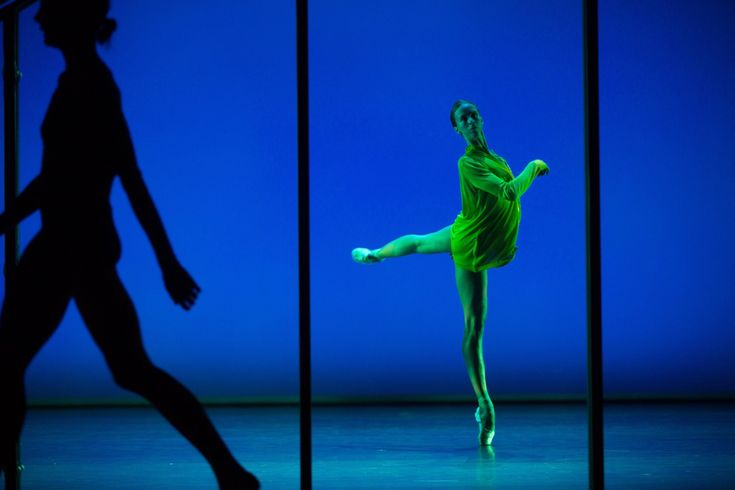
Read thought-provoking books, watch beautifully shot movies, check out MET Gala costumes, and visit cool museums!
All forms of art can inspire and fuel your art. When you see something inspiring, write it down so you can come back to those ideas later.
Even something simple like an interesting conversation with a friend can turn into a dance choreography idea or a new dance move.
Already feeling inspired? Watch this video to learn how to turn those ideas and concepts into dance moves!
Freestyling doesn’t necessarily mean that you’re going to be using those exact moves in your piece. In fact, you probably won’t even remember a lot of what you did!
The point is to let your body respond to the music. Play the whole song and let yourself move. Notice how you naturally groove to certain sounds.
This will be the first "layer" in your choreography.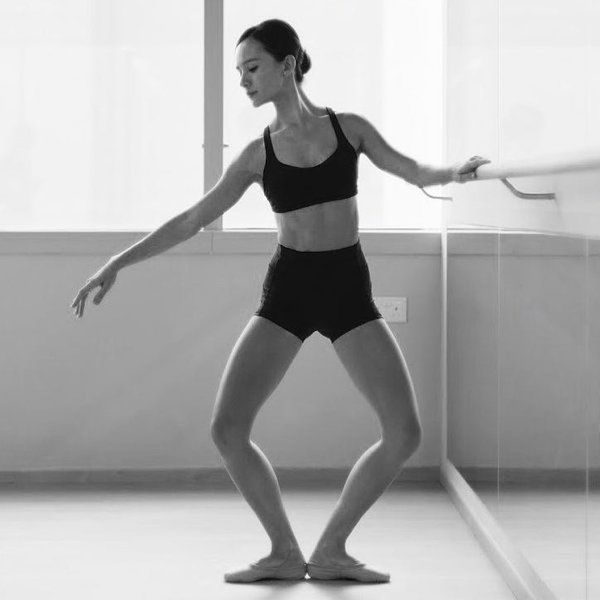 You can then try variations or build more intricate movements on top of it.
You can then try variations or build more intricate movements on top of it.
Not sure how to start freestyling? Read this article for a few more tips: How to Freestyle Dance
And if you put on a song you really love, but still can't come up with any moves, check out this video!
Clay gives you tips for creating unique movements, even when you think you have choreo block.
You probably decided to choreograph to the song because you thought certain sections would look dope on the body.
Is it a climax? A breakdown? An instrumental interlude?
Whatever it is, start with that part. You don’t have to choreograph chronologically from beginning to end.
Start with the chunks that come easier, then build the rest of the choreography around it.
After you've choreographed your favorite chunks, make sure to give some love to those in-between sections!
Just because it’s not a crazy beat combo doesn’t mean it doesn’t have potential to look amazing.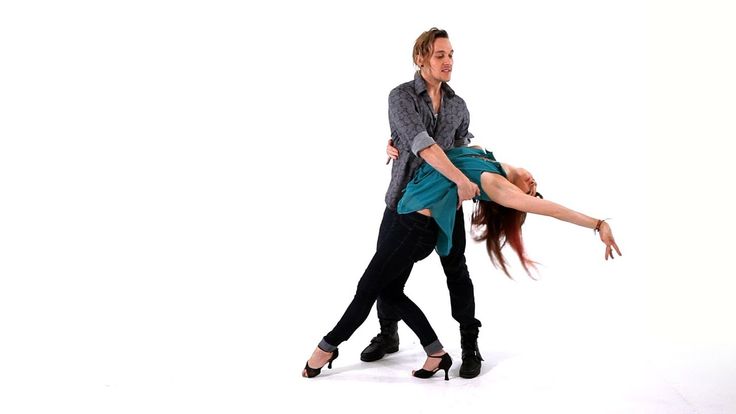
Sometimes it’s those slower moments that are the most memorable. Check out this piece from Galen – it's all about her presence and demeanor.
Even her simple movements are engaging because she's filling those calmer moments with presence, before she goes off in a powerful combo.
A lot of us have the problem of making choreography that looks good in our heads... But not on our bodies. At that point, you just gotta train yourself.
Some refer to this as “cleaning” or “setting,” which involves perfecting certain pictures you make with your body, looking at pathways between points, or drilling quick combinations.
Check out this article to learn more about the cleaning process: How To Execute Choreography Better By Utilizing Your Body With Carlo Darang (Choreo Cookies)
And remember: How you choreograph will be how the piece looks. So when you choreograph a dance, do the moves full out.
So when you choreograph a dance, do the moves full out.
For example, if you want a plié somewhere, really bend those knees. Let body rolls go all the way through your body. If you’re doing floorwork – get on the floor!
It's not going to magically look amazing when you perform on stage or in front of the camera. Make it amazing as you're making it.
Watch this video to learn more about dancing full-out, in every moment.
There are probably moments within your piece that feel perfect to you. Don’t change those.
But the piece as a whole is probably a bit rough around the edges, especially if this is your first time choreographing.
As novelist Ernest Hemingway once said, “The first draft of anything is sh*t.”
So don’t worry if it’s not exactly what you wanted it to be. You can work your way there!
Do this by trying out variations of movements, scrapping some sections, changing directions, or adding floorwork – whatever you feel is necessary to “edit” the piece.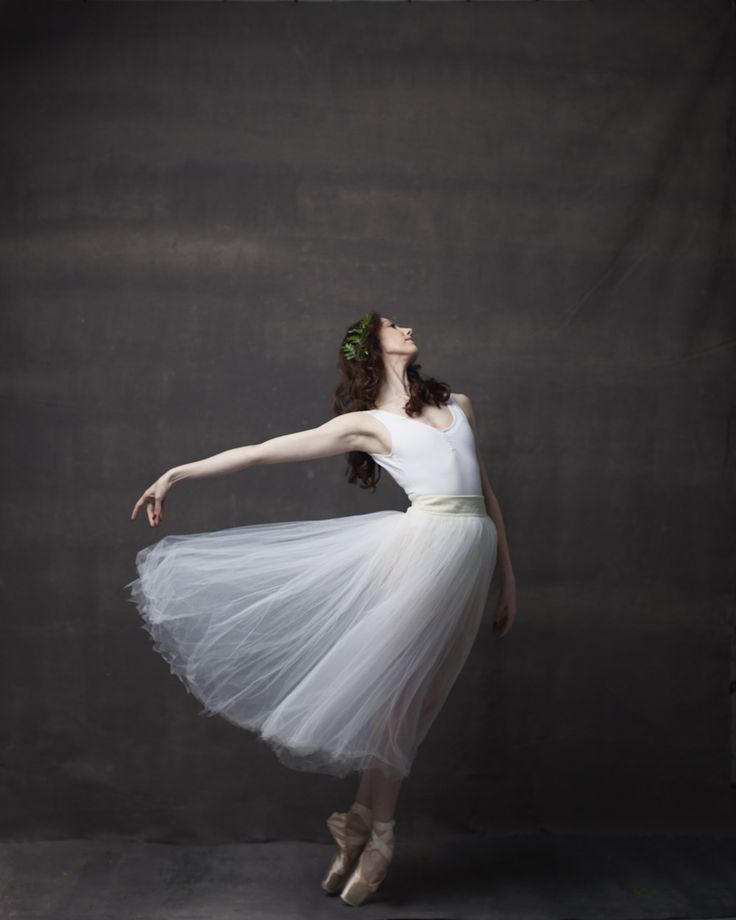
And honestly? That’s what makes creating so fun – trying things. Saying “Nope, not that,” or “YES oh my god, it worked!”
It’s supposed to take multiple drafts! Just keep editing until you’re done.
Of course, if you're a perfectionist, you might feel like your piece is never finished, but you gotta draw the line at some point.
While it’s awesome to try to keep improving your piece, there comes a point where you have to say “This is it. It's ready."
It's not about feeling like your piece is perfect. It's about making something that you feel proud to say you made. So when you're done, let it be.
Give yourself a pat on the back. Record the piece and share it with us via our STEEZY Studio members Facebook Group!
Thousands of dancers around the world are not only improving their dance skills on STEEZY Studio... they're joining our community and getting feedback from other dancers!
Click here to sign up for STEEZY ;)
Check out this video for a quick recap of this guide AND a few extra tips!
How to stage a dance?
You want something unusual, to please your friends, relatives or loved ones with a bright dance that will decorate a corporate holiday or your family evening. Choreographer Ekaterina Gavrilova tells how to put on a spectacular dance in a short time.
In order to put on a dance for a holiday on your own, it is not always necessary to have choreographic experience and know the basics of classical ballet. Dance is joy! This is positive! And within the framework of the holiday, it is also humor that defuses any situation and raises the mood to a higher benevolent level. I want to share with you the advice that I usually give to my beginner students when I see that they really want and are already ripe for performing in a circle of friends and relatives.
1. Decide on the music!
Music is the basis and the key to the success of your dance. Moreover, it can be both rhythmic and lyrical composition, it doesn't matter.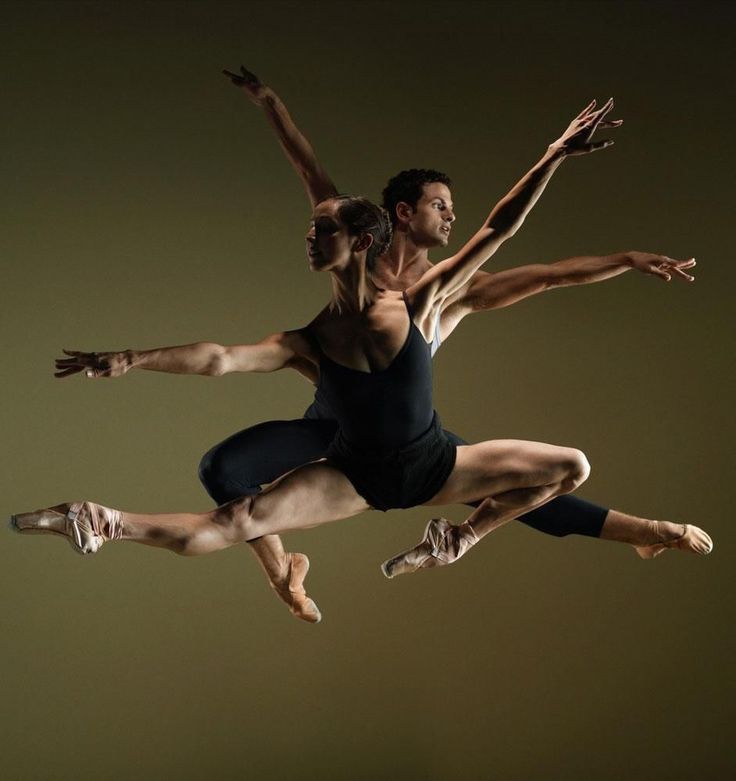 The main thing is that it raises your deepest feelings, awakens your imagination and not only gives impetus to draw a drawing of a dance, but also translate it into reality. Choose your favorite dance style. It can be anything: vogue, dancehall, flamenco, zumba, strip, oriental, or maybe you want to make a dance mix - in general, choose any direction that is close to you and encourages you to dance. Choose music, and when the choice is made an important step - cut it! A holiday is a holiday, so that the dance is like a bright flash, like fireworks, flared up for 1, 5 - 2 minutes and delighted everyone around. It is more difficult to set compositions for 4-5 minutes, it is physically harder to dance, and such timing is useless within the framework of the holiday. The dance at your holiday should be for joy, and not for the question: “Well, when will it finally end?
The main thing is that it raises your deepest feelings, awakens your imagination and not only gives impetus to draw a drawing of a dance, but also translate it into reality. Choose your favorite dance style. It can be anything: vogue, dancehall, flamenco, zumba, strip, oriental, or maybe you want to make a dance mix - in general, choose any direction that is close to you and encourages you to dance. Choose music, and when the choice is made an important step - cut it! A holiday is a holiday, so that the dance is like a bright flash, like fireworks, flared up for 1, 5 - 2 minutes and delighted everyone around. It is more difficult to set compositions for 4-5 minutes, it is physically harder to dance, and such timing is useless within the framework of the holiday. The dance at your holiday should be for joy, and not for the question: “Well, when will it finally end?
2. Pick up the moves!
The second piece of advice follows directly from the first one, because if the music is chosen and it is well-timed, it will be much easier for you to come up with the dance sequence itself.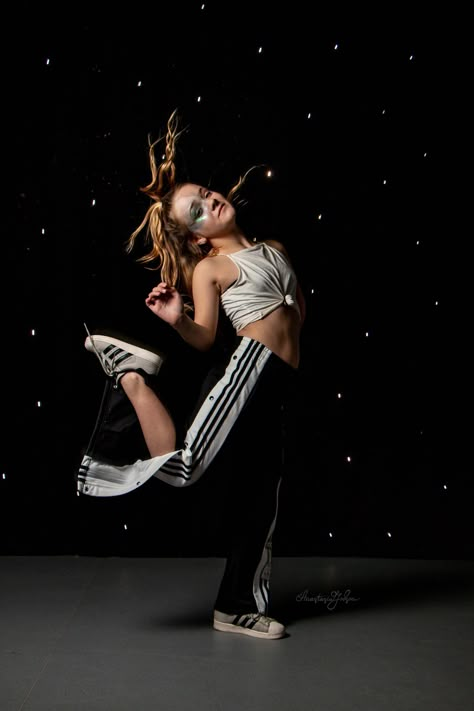 Scary? And you presented impossible dance steps that only the ballet dancer Tsiskaridze can do? Do not be afraid! This is your dance, which means that the movements in it should be for you. Listen to the music again, and if necessary, listen to it many, many more times until you begin to imagine what and how exactly you will dance to it. You can pick up from your past baggage your most successful dance moves that look good on you, you can flip through a lot of different videos that are similar in style or to your specific composition and choose something suitable for your dance, and finally, you can just give free rein to your imagination. , and dance a bunch in front of a mirror, as it falls on your soul, the main thing is then to record this dance on video, rehearse several times to dance later, as it should be in front of the public.
Scary? And you presented impossible dance steps that only the ballet dancer Tsiskaridze can do? Do not be afraid! This is your dance, which means that the movements in it should be for you. Listen to the music again, and if necessary, listen to it many, many more times until you begin to imagine what and how exactly you will dance to it. You can pick up from your past baggage your most successful dance moves that look good on you, you can flip through a lot of different videos that are similar in style or to your specific composition and choose something suitable for your dance, and finally, you can just give free rein to your imagination. , and dance a bunch in front of a mirror, as it falls on your soul, the main thing is then to record this dance on video, rehearse several times to dance later, as it should be in front of the public.
3. Choose a suit!
It is clear that you will not be dancing in front of an audience in home or office clothes, unless, of course, this corresponds to your dance plan. Definitely, the costume is no less important in a dance performance, if the music and movements are already in full order. For the duration of the holiday, you can rent a costume, or you can assemble it yourself from improvised material. For example, on the eve of the upcoming 2018 Year of the Yellow Dog, wear a yellow outfit and decorate it with ears and a tail if your dance is staged with humor and your audience will understand this. If your audience is all respectable ladies and gentlemen, you can dress up as a goldfish and flash your scales in front of them, since gold is also the trend of the coming year. Mustard colors, brown velvet or plush will also be fashionable, and it is better to wear gold, amber or yellow-colored stones from jewelry. But if you don't want to worry about the trend and color scheme, just make a costume that would be in harmony with your music and the dance itself. After all, no one will forbid you on the eve of the year of the dog, for example, to the sounds of music from the Pink Panther, turn into a flexible cat, or into Cleopatra to music in the pharaonic style.
Definitely, the costume is no less important in a dance performance, if the music and movements are already in full order. For the duration of the holiday, you can rent a costume, or you can assemble it yourself from improvised material. For example, on the eve of the upcoming 2018 Year of the Yellow Dog, wear a yellow outfit and decorate it with ears and a tail if your dance is staged with humor and your audience will understand this. If your audience is all respectable ladies and gentlemen, you can dress up as a goldfish and flash your scales in front of them, since gold is also the trend of the coming year. Mustard colors, brown velvet or plush will also be fashionable, and it is better to wear gold, amber or yellow-colored stones from jewelry. But if you don't want to worry about the trend and color scheme, just make a costume that would be in harmony with your music and the dance itself. After all, no one will forbid you on the eve of the year of the dog, for example, to the sounds of music from the Pink Panther, turn into a flexible cat, or into Cleopatra to music in the pharaonic style.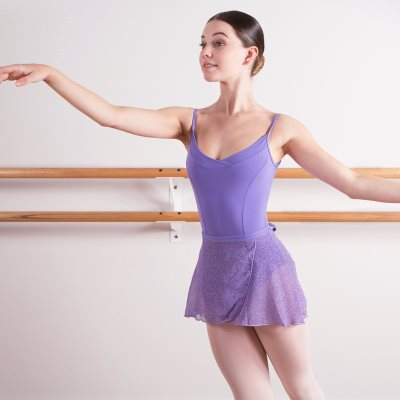
The choice is yours! Go ahead and show everyone the class!
The author of the article Ekaterina Gavrilova
You can order a performance or sign up for a lesson by writing us a LETTER
How to come up with a dance? | "Country of Soviets"
How to come up with a dance?
Composing a dance sketch is a complex and capacious business, because it is creative. It requires inner freedom, awareness of the harmony of the body, musical knowledge, and most importantly - fine taste.
As the impression of a person is made up of a wide variety of factors, characteristics, for example, his speech, so the dance is evaluated by its "lexicon". And it depends only on you whether it will be abnormal or colorful. Before you get up and start trying to put the movements to music, you need to devote more than one or two evenings to studying the vocabulary of the direction of dance that you have chosen. Fortunately, now there are many Internet resources for this.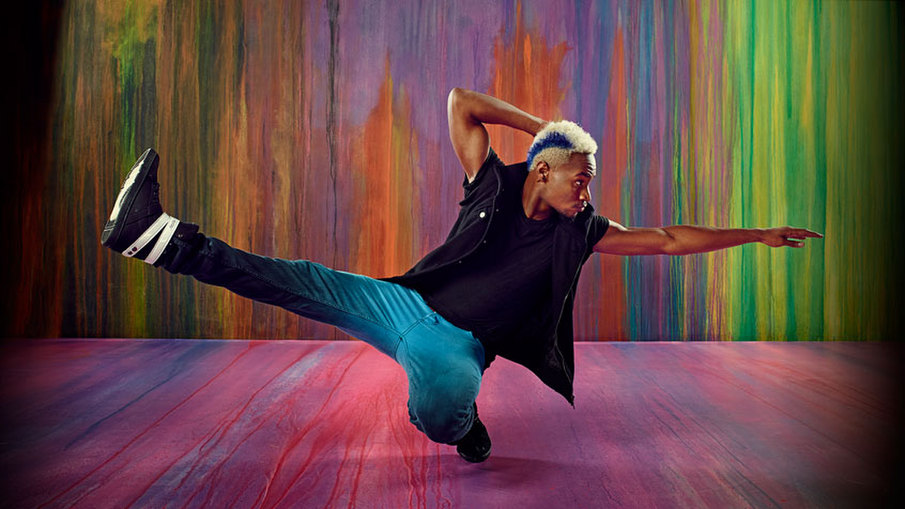
- select several, in your opinion, bright and strong numbers on the network. Watch them 3-4 times, if necessary, more, depending on when you understand the individual movements of the performer.
- keep watching, watching, watching. After looking at a large number of diverse numbers, you will begin to notice their strengths and weaknesses, you will begin to understand how dances are made, what is their structure. Also, choreography is easier to remember when you look at it.
- now start working with the music of the viewed numbers. If you have basic musical knowledge about time signatures, rhythm, beats, your task will be much easier. Try to understand how the choreography reflects the mood prevailing in the music, how the strong beats are highlighted, how the accents are placed, what place the music occupies in the performance.
- pay attention to how the movements are laid out in music, how the performer transitions from one element to another. Only repeated observation will give you the opportunity to understand the smallest details and thereby gain invaluable experience.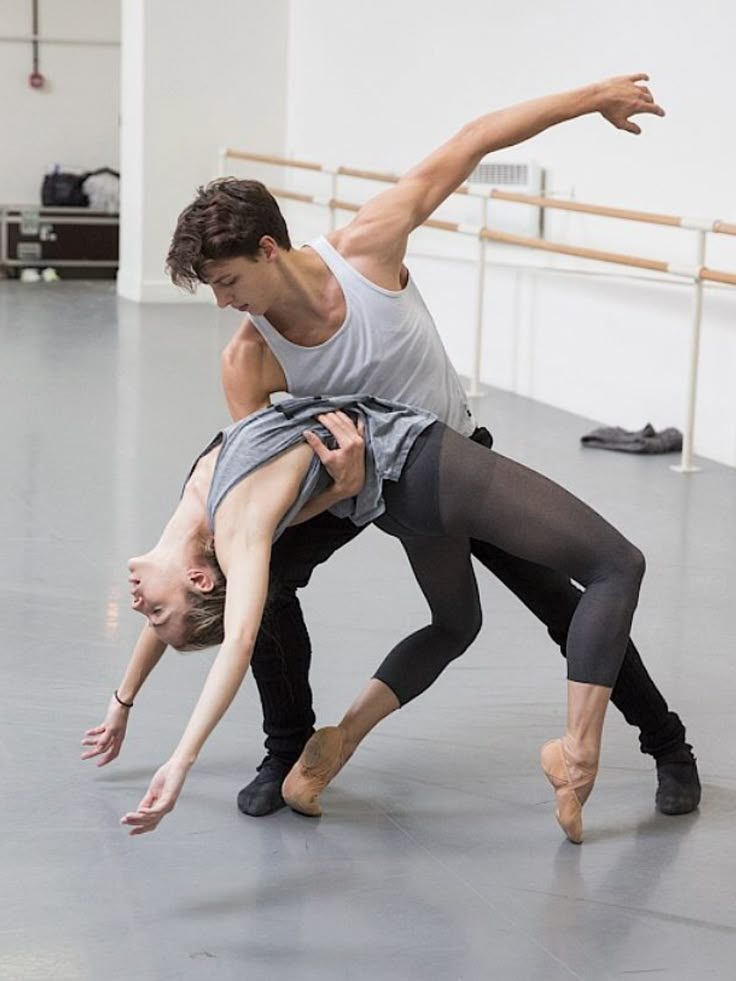
All of the above will take you an average of a couple of weeks, for someone more, since the amount of information received is large, it needs to be mastered. (assuming you want to do a quality dance). Now your knowledge base has increased significantly. You know a lot of individual elements, remember them and can draw. You have begun to develop a taste: now you know exactly how you DO NOT want to see your dance, but how it would be nice. There is confidence in how to do it right.
Now you have come to one of the most difficult tasks in creating a dance - the choice of music. This is the most important step, because everything in your dance depends on the music. When choosing music, you should keep the following in mind:
1. Don't pick the biggest hit of all time. The very first and easiest thing you will want to do, because this music is your favorite. But tens of thousands of other people like it, and this puts a burden of responsibility on you: you can’t dance badly to such music.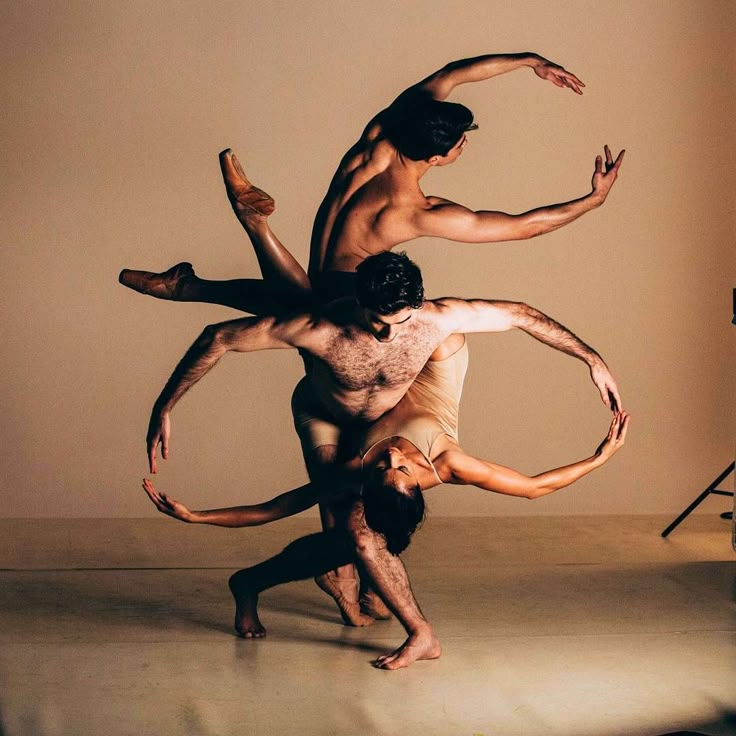 (of course, if you plan to show your dance to someone or put it on the net) Do you have enough knowledge and skills to match such a composition? If you still decide to do it, great. But you need to work much more and more painstakingly.
(of course, if you plan to show your dance to someone or put it on the net) Do you have enough knowledge and skills to match such a composition? If you still decide to do it, great. But you need to work much more and more painstakingly.
2. Music should inspire not today or tomorrow, but for many days in a row. This is the most important criterion, music is the main assistant in the work of the imagination. Look for music carefully, for a long time, until one of the compositions affects you. The search will be greatly facilitated by the selection of songs, which are in great abundance on the Internet. (They were made up of those who have already traveled the path in search of "their" music).
3. When you have settled on a few songs that you absolutely love and inspire you, you should listen to them and choose one, no matter how difficult it may be. So, try to choose music with development: it should be interesting, changing, with a story, with a climax, with bright accents. Listen to the music and imagine the movements of the arms and legs that can be portrayed under it.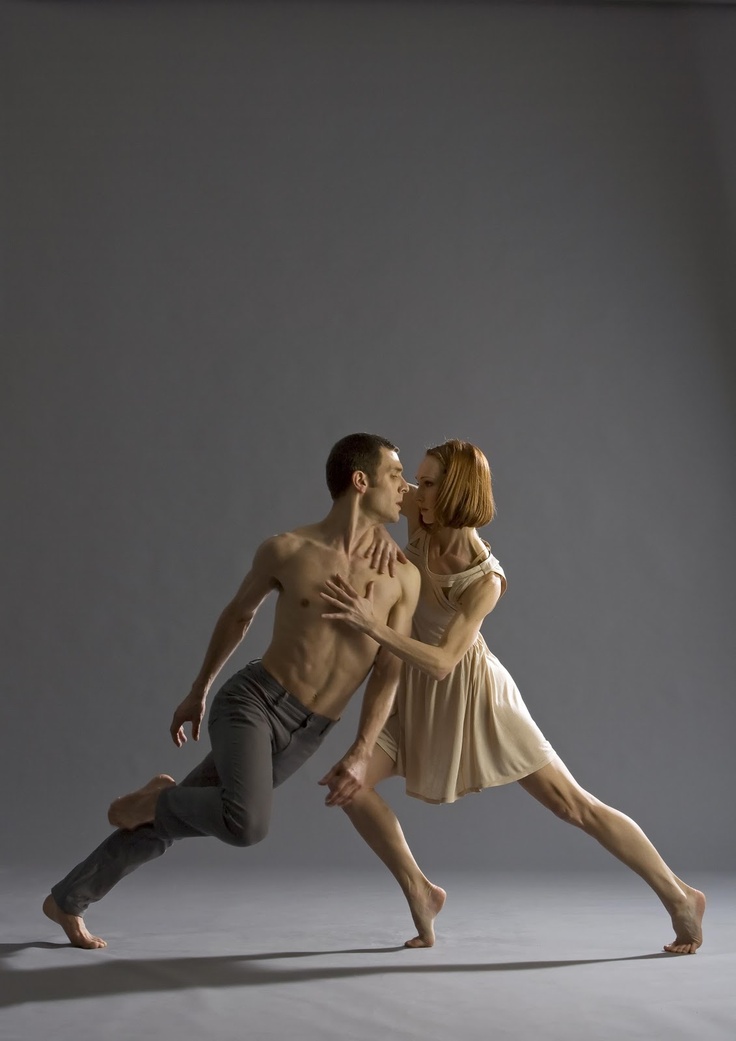 Of course, you can do a performance with monotonous music (a rather trendy and interesting phenomenon), but then your choreography should be stunning in order to distract the viewer from the sound.
Of course, you can do a performance with monotonous music (a rather trendy and interesting phenomenon), but then your choreography should be stunning in order to distract the viewer from the sound.
4. If you feel the slightest doubt about the choice of music, keep looking! Time will not be wasted, the music will give you a great dance.
So, you have chosen the music, now it's time to move on to the most responsible - composing the dance. If a story comes to mind while listening, let it come to life! Dancing a story is always interesting, and making up a dance becomes much easier.
Next, you should apply some knowledge of the musical part. You have almost memorized all the transitions and climaxes in music, so let's get straight to the point:
1. Turn on the music and listen to it before the new musical phrase. You will clearly hear this transition. Listen again, identify how many "accounts" this musical phrase takes: 16, 24 or 32? Now you know exactly how much time and “accounts” you have for movement.